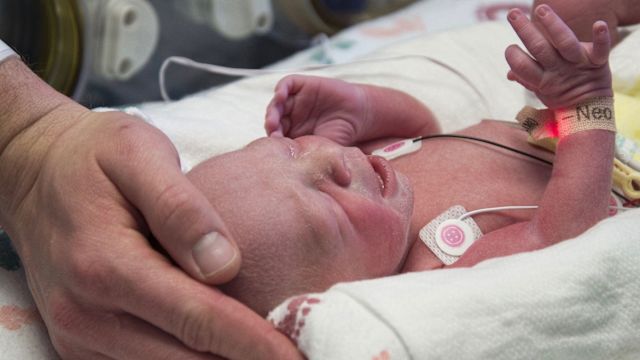Updated on September 25, 2024.
A uterus transplant is a procedure that may help the three to five percent of people in the world who have infertility due to a problem with their uterus, or who do not have a uterus. Pioneered in 2014, the procedure involves temporarily transplanting a healthy uterus into another person. Then, an embryo is implanted into the transplanted uterus. After one to two pregnancies, the uterus is removed.
Here’s what to know about this new procedure, including what’s been achieved so far and the outlook for the future.
How a uterus transplant works
To perform a uterus transplant, in addition to surgeons and other healthcare providers (HCPs), two people are required: a uterine recipient and a uterine donor.
Uterine recipient: Eligibility for receiving a uterus transplant involves a number of factors. A person who has uterine factor infertility (UFI), or a non-functioning or nonexistent uterus, is eligible. The person must also meet several criteria. At Texas Children’s Hospital, where the first babies in the United States were delivered using uterus transplant, people should meet the following criteria:
- Have UFI
- Less than 40 years old
- Assigned female at birth
- Have a body mass index (BMI) less than 30. BMI estimates body fat based on height and weight.
- Willing to move to Texas
- Not smoke
- Meet other medical criteria for transplant
Uterine donor: Someone wishing to donate their uterus may either be a living donor or a deceased donor whose wishes were to donate their organs. Their blood type must match the recipient’s. Other criteria may vary depending on the hospital.
Some are:
- Age 25 to 65 years old
- BMI less than 30
- Have given birth to at least one child at full term. This is 39 weeks to 40 weeks and 6 six days of pregnancy.
- Not smoke
- Meet other medical criteria for donation
Once a donor and a recipient have gone through a screening process, the recipient must work with a fertility expert to create embryos using in vitro fertilization (IVF). This technique involves fertilizing the eggs outside the body in a lab, then transferring an embryo back into the uterus.
Next, the donor undergoes a hysterectomy, or surgery to remove the uterus, fallopian tubes, and cervix. The recipient undergoes transplant surgery to receive the donated organ. During the three-month recovery period and for as long as the uterus remains in their body, the person will need to take immunosuppressive drugs to make sure their body doesn’t reject the donated organ.
After three to six months, a single embryo is transferred to the uterus. If it becomes a pregnancy, it will be considered a high-risk pregnancy. The fetus will be monitored closely and then delivered by caesarean section.
The last step, after one or two pregnancies, is when surgeons remove the uterus. This is necessary because the immunosuppressive drugs needed to keep the body from rejecting the uterus are not safe to take long-term.
Motivations for choosing a uterus transplant
People who aren’t able to use their own uterus to bring a pregnancy to term have several options available, including surrogacy and adoption. So why might someone be interested in uterus transplant instead of these alternatives?
There are many different reasons. Adoption can have lengthy and difficult bureaucratic challenges and may ultimately be more expensive. Many people also have a strong preference for having their own biological child.
And many people hope to undergo a pregnancy and the unique experience of carrying a pregnancy and giving birth. Doing so can help them bond with the growing fetus through activities like talking, music, and sensation. People who bear their own child may also be able to breastfeed after the birth.
Successes so far
Sweden saw its first successful uterus transplant in 2014.
In the United States, in 2017, a person gave birth following a uterus transplant. The newborn entered the world at Baylor University Medical Center in Dallas, Texas. The parents opted to stay anonymous, though the living uterus donor has been identified as Dallas nurse Taylor Siler, a mother of two children.
After this, many more uterus transplant procedures and live births have taken place worldwide. As of late 2020, about 100 uterus transplants worldwide had been performed.
The future of uterus transplants
Since uterus transplants are still quite new and rare, researchers will continue working to improve both the process and the procedure itself in the years to come. The cost is hard to estimate because there are so many variables based on the clinical needs of each case, but overall the cost remains prohibitive for most people. Insurance will not cover the transplant, but may cover aspects of IVF or the delivery.
People with gender identities outside of cisgender women may be interested in receiving a uterus transplant. Authors of a 2021 study published in the International Journal of Transgender Health say such a procedure may be feasible.
Ultimately, the development of uterus transplant capabilities is a hopeful beacon for those with uterine factor infertility.







